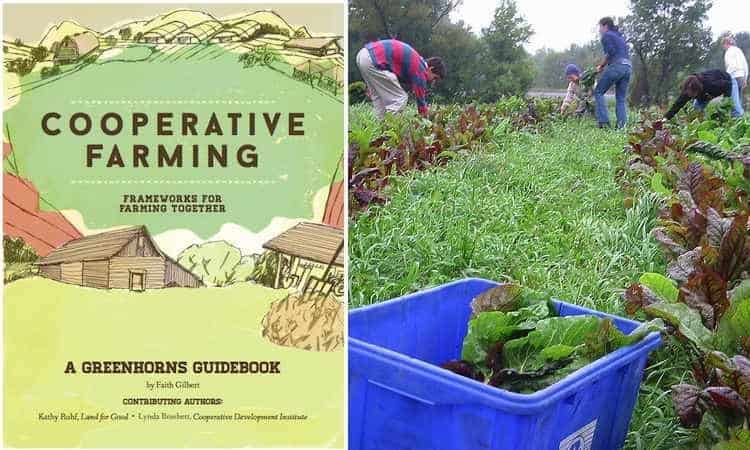The idea of cooperative farming might conjure up images of utopian hippies living off the grid, by their own rules and isolated from the rest of the world. A new guidebook, Cooperative Farming: Frameworks for Farming Together, by Faith Gilbert, challenges these images and offers a whole host of models for cooperation in agriculture that are already working, right now. Gilbert sees collaboration in the food system as a “movement toward a cooperative, sustainable, and just economy.”
Cooperative farming is, most simply, the sharing of any part of a farming operation to achieve mutual benefits and confront mutual challenges. The Corbin Hill Food Project, one group Gilbert highlights, coordinates a Community Supported Agriculture (CSA) network to bring food from New York State farms to Harlem and the Bronx, providing crucial administrative support – residents can pay by the week and put their shares on hold as their financial or other needs change.
But farming cooperatives pre-date the present industrialized food system, so what’s new? Why should our agricultural system, in addition to working towards organics, local markets, or sustainably raised livestock, also worry about cooperative models? Principally, Gilbert lays out how small-scale farms, by working together, might access the advantages available to large farms. Small-scale farming may offer food production that is more efficient, productive, sustainable, and economically beneficial to communities involved, but its critics will always cite the limitations that come with downsizing.
Gilbert’s work assembles specific case studies and generalized frameworks from interviews with 42 cooperative farming operations and information from 50 pertinent publications. While Cooperative Farming is partially designed as a toolkit for those looking to implement this kind of model, it also effectively takes the reader from square one through the gambit of hows and whys behind cooperative farming projects.
According to Cooperative Farming, the bonuses available to farmers through collaboration can include everything from generating more income, purchasing in bulk and combining borrowing power, to sharing equipment, risk, labor and marketing. The book divides these benefits into sections on shared services or goods and on shared ownership.
In the case of the Rogue Farm Corps (RFC), farmers in Oregon State’s Rogue Valley share labor as they hire and educate new workers, dividing the training responsibilities and the benefits of the extra help. Southern Exposure Seed Exchange (SESE), in Virginia, shares labor, profits and responsibilities within the community that runs it. Thirty community members each put in 42 hours towards a range of tasks and the business’ income covers their living expenses, plus a little extra. In Quebec and Ontario, CUMA (Coopérative d’Utilisation de Matériel Agricole) cooperatives purchase farming machinery using capital invested by members, with each member having a single vote in co-op decisions.
Gilbert also outlines a variety of models for decision-making – SESE works by consensus, while others use majority vote – and for collective structures, from cooperative corporations to contract partnerships.















